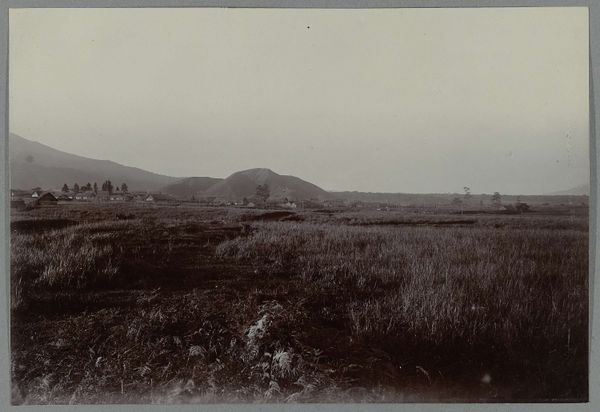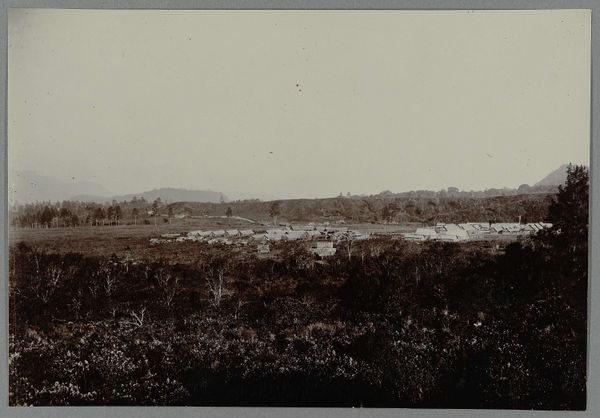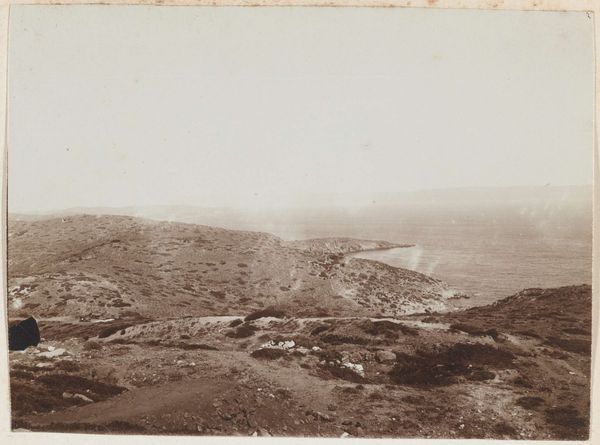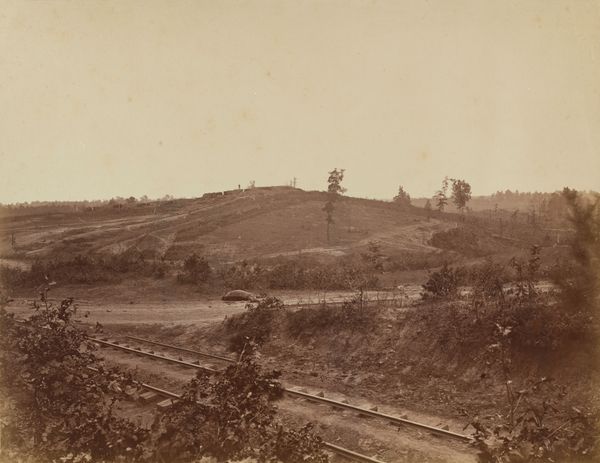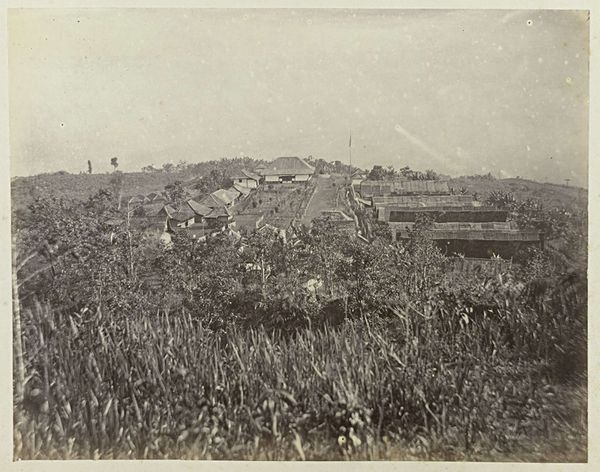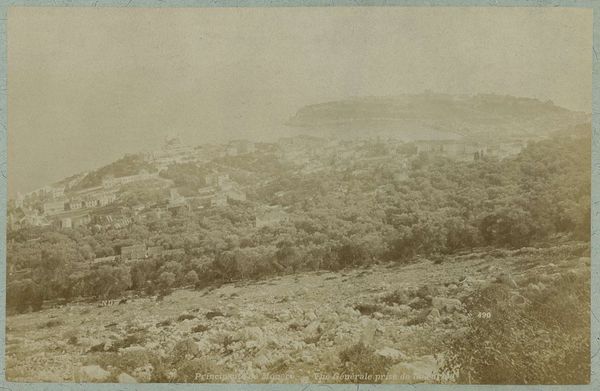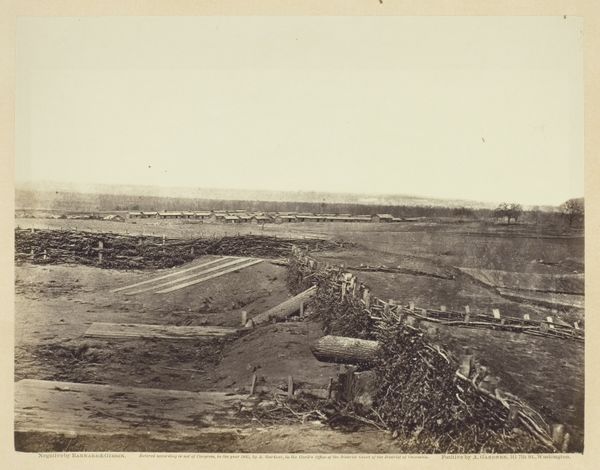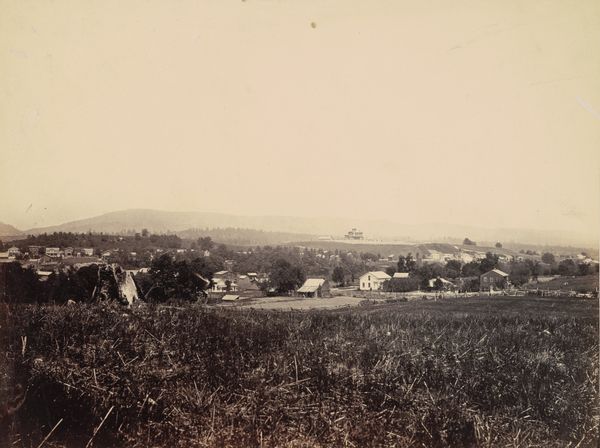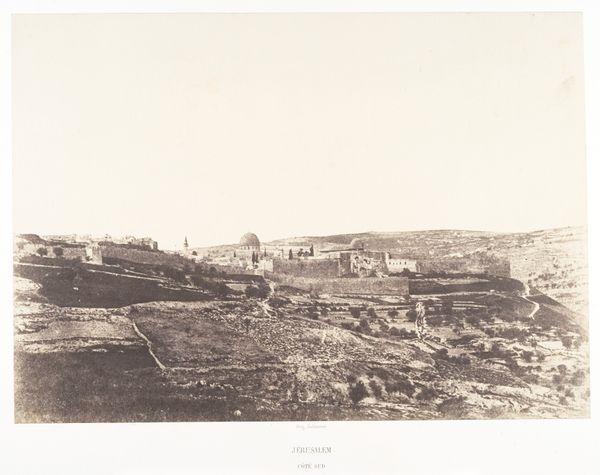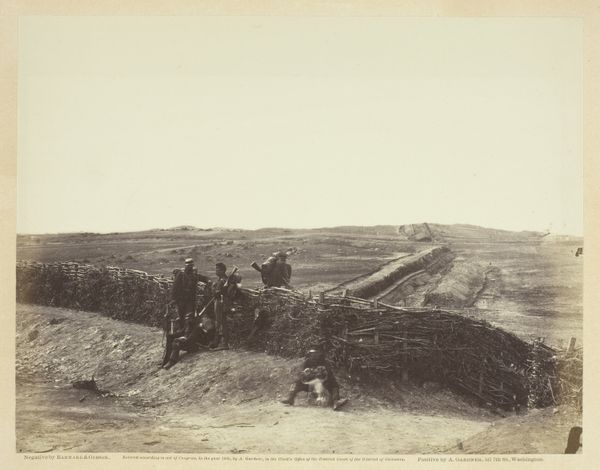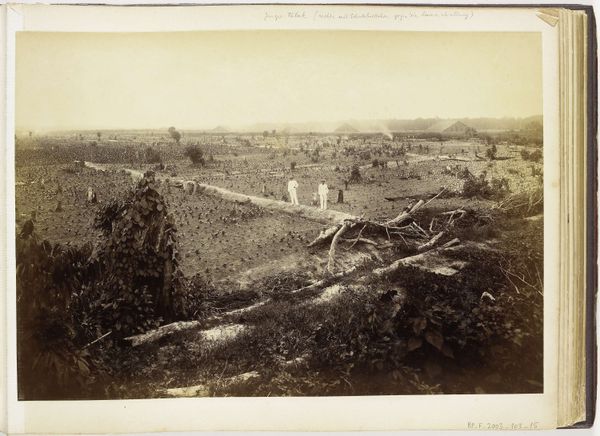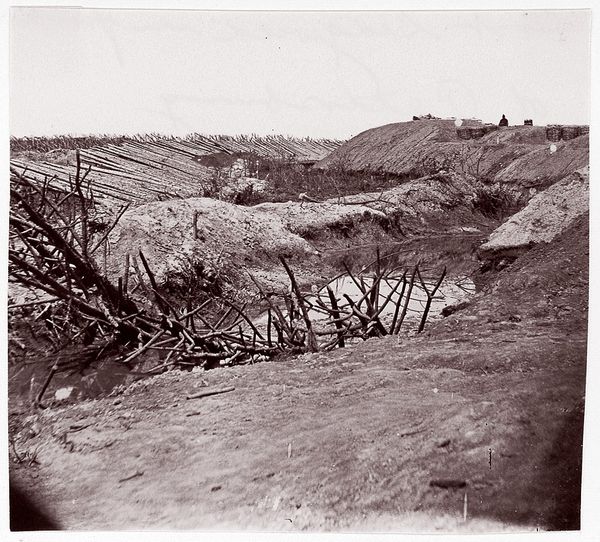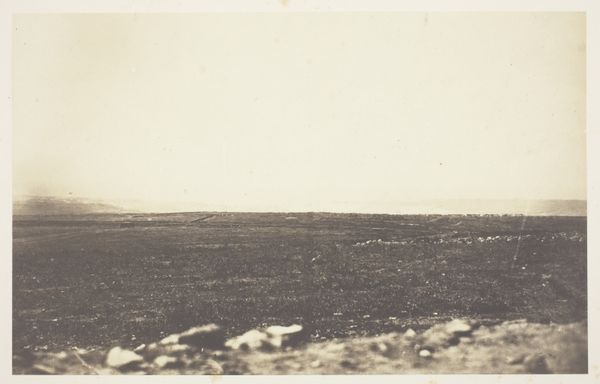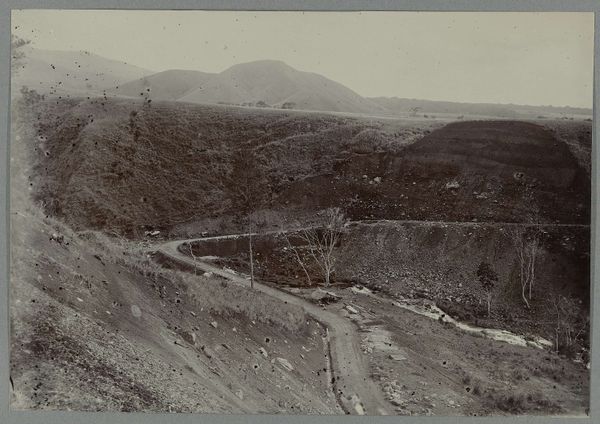
print, photography, albumen-print
#
pictorialism
# print
#
landscape
#
photography
#
albumen-print
#
realism
Dimensions: height 138 mm, width 200 mm
Copyright: Rijks Museum: Open Domain
Curator: What a fascinating photograph. This albumen print, taken between 1903 and 1913, is titled "Brug over de rivier Alue Teungoh," or "Bridge over the Alue Teungoh River." It’s an anonymous work capturing a landscape in, I presume, what was then the Dutch East Indies. Editor: The somber sepia tones lend a stillness, a profound quietude to the scene. It almost feels desolate, with that overgrown foreground sharply contrasted with the seemingly endless plains. What strikes me is how that bridge, rendered as a mere horizontal line, bisects the land, acting as a… a form of constraint on what feels like boundless terrain. Curator: Yes, that visual division is telling, isn't it? Constructed during the Dutch colonial period, this bridge wasn't just a physical connection; it facilitated the movement of resources and personnel, consolidating power dynamics. Think of it as a vein, forcing the lifeblood through colonial arteries. The photograph, by capturing the infrastructure, implicitly captures the structures of dominance. Editor: Exactly! The photographic gaze becomes complicit. The framing normalizes the intrusion on this space and its community. The landscape then transforms into a site of exploitation, viewed, used, commodified...and we need to question whether such views continue in modern day global structures. Curator: And we also have to consider who would have been taking these pictures, their motivations and even what that bridge would come to symbolise for the colonized population. The building of railways and infrastructure were used to solidify colonialism, and the act of taking photographs can be viewed through that same critical lens. Editor: Absolutely. And considering this was captured through an albumen print—a labor-intensive process, involving egg whites—hints at the scale of the colonial enterprise and the meticulousness required to represent it. The mountains in the backdrop remind us, perhaps ironically, that certain aspects of the land resist being flattened by colonial endeavours, reminding us that indigenous claims cannot be suppressed. Curator: This photograph, though seemingly a simple landscape, opens up a critical understanding of power and perspective, an analysis so pertinent for its own time and that to the current landscape. Editor: Indeed. The 'quietude' initially noticed now speaks loudly of something darker. Thank you for drawing those complex threads, which brings clarity and depth to the artwork.
Comments
No comments
Be the first to comment and join the conversation on the ultimate creative platform.
